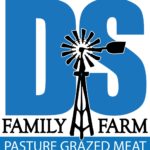Worried about what you are "really" eating? Have peace of mind with pasture grazed meats.
Avian Flu
The birds were chirping out our window this morning. Here is a quick list of the wild bird species observed around our place over the past few days:
- Robin
- Finch
- Red Wing Black Bird
- Cardinal
- Grackle
- Mourning Dove
- Ring-Necked Dove
- Swallows
- Blue Wing Teal
- Bob White Quail
- Wild Turkey
- Cow Bird
Will the flu affect our flock?
The question probably isn’t WILL our flock be exposed to the flu (and other ailments) but HOW will the flock respond? I would like to think that our chickens have a well-developed immune system, giving the birds their best chance at surviving any ailments. Of course, if we see a bird that is not performing well, we will remove it from the rest of the birds and allow it to heal (in the hospital coop).
You can track the avian flu within “backyard flocks” and “large confinement buildings” at the USDA APHIS Avian Influenza website. I suppose our operation would be considered a “backyard flock”. A couple of hundred chickens at a time. They move around the pasture under our “chicken tractors” for protection from predators and the elements. Not as impressive as the huge confinement buildings.

The Forgiveness of Grass
Are we concerned about Avian Flu and the chickens we raise on pasture? We are aware that there are concerns with animal health issues at all times! We monitor our animals daily looking for any signs of weakness. Animal health is addressed through adequate nutrition and the “forgiveness” of fresh grass. Grass has superhero healing powers, refer to: “Grass, the Forgiveness of Nature” by Charles Walters, “The Forgiveness of Nature: The Story of Grass”, by Graham Harvey, and “Grass The Yearbook of Agriculture 1948: USDA”.
By orchestrating FRESH GRASS and MOVE, one essentially ensures healthy, happy animals. The “move” part is just as important as the “fresh grass”. Don’t let them stay where they just pooped without providing them a fresh break and opportunity to move. We are trying to mimic how nature functions. Herds are constantly on the move to fresh grass leaving their dung and trampled grass behind. You can do this with animals of any size. Of course, the ideal situation is the integration of multiple species to create synergy. Often you will find that one species eliminates a problem experienced by another species. For example, chickens following cattle will consume fly larvae that would end up being a nuisance to the cows.

What about the wild birds?
We often use the hashtag #FarmingWithNature on our Instagram photos. On our farm, we like to see the diversity of life, from the animals we raise to our wildlife neighbors. Nature thrives on diversity and chaos. At DS Family Farm, we do not try to tame or control nature. Trying to “tame” nature, to conform to our ideals, requires large amounts of input. We try to fit in with the natural flow of energy, nutrients, and water. God designed nature, we can hardly improve on His design. We look for opportunities to work within nature’s design and profit from the surplus. We believe we have a God of abundance.
Look again at the list of wild birds we have observed around the place (scroll to top). The diversity in this list is probably due to the shelterbelt of trees we have planted around the farm. The trees and surrounding habitat are a draw to wild birds. This past weekend I drove by David City Nebraska for a family function. On my trip, I saw a number of the big chicken confinement buildings. The buildings were located in the middle of large crop fields with little to no wildlife habitat nearby. I don’t think any wild birds would be interested in stopping near one of these indoor chicken barns. As for our shelterbelts of trees? We are thankful that we have the trees for the protection provided during our recent wind storms. If we have to deal with wildlife for that benefit, we love it.
Interested in how healthy, happy, no soy, no corn, pasture chicken tastes? Check our website for Pasture Chicken info. You might try a pasture chicken for health purposes, but it is the flavor that will keep you coming back. Remember, nutrition follows flavor. Author Mark Schatzker recently posted a thread with updated research on flavor and nutrition.







